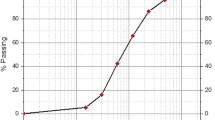Abstract
The production of the cement is a highly energy-intensive process and contributes to the release of pollutants into the atmosphere due to both the chemical reactions occurring in the kiln and, in most cases, the burning of fossil fuels for power production. So, the reduction of the cement content in a concrete would be indirectly useful to decrease the pollutant emissions in the atmosphere. The results of our investigation indicate that the replacement levels of cement by the 4 % of nanoparticles show a positive increasing of many physical and chemical properties allowing a relevant saving of cement content inside a concrete mixture. The compressive strengths, tensile splitting, propagations of ultrasonic pulses and water permeability tests were investigated on different models and realistic structures by the ISO EN rules. The influence of the nanoparticles on physical and mechanical properties was measured at different ripening times. Both silica and iron oxides make cement pastes harder and accelerated hydration processes of the cements. A remarkable decreasing in water permeability was also observed showing that nanoconcretes can be used as innovative restoration systems for cement-based historical and contemporary artefacts in order to avoid carbonation processes. Moreover, a smaller quantity of cement binder inside the mortar causes relevant positive effects on the reduction of carbon dioxide emission in the atmosphere.








Similar content being viewed by others
References
A. Kapur et al., The contemporary cement cycle of the United States. J. Mater. Cycles Waste Manag. 11(2), 155–165 (2009)
L. Vukotic, R.A. Fenner, K. Symons, Assessing embodied energy of building structural elements. Proc. Inst. Civil Eng. Eng. Sustain. 163(3), 147–158 (2010)
P.K. Mehta, P.J.M. Monteiro, Concrete—Microstructure, Properties and Materials (McGraw-Hill, New York, 2006)
V.V. Vikulin, M.K. Alekseev, I.L. Shkarupa, Study of the effect of some commercially available nanopowders on the strength of concrete based on alumina cement. Refract. Ind. Ceram 52, 288–290 (2011)
W. Stober, A. Fink, Controlled growth of monodisperse silica spheres in the micron size range. J. Colloid Interface Sci. 26(1968), 62–69 (1967)
S.K. Park, K.D. Kim, H.T. Kim, Preparation of silica nanoparticles: determination of the optimal synthesis conditions for small and uniform particles. Colloids Surf. A 197(2002), 7–17 (2001)
K.S. Rao, K. El-Hami, T. Kodaki, K. Matsushige, K. Makino, A novel method for synthesis of silica nanoparticles. J. Colloid Interface Sci. 289(2005), 125–131 (2005)
E. Matijević, P. Scheiner, Ferric hydrous oxide sols: III. Preparation of uniform particles by hydrolysis of Fe(III)-chloride,-nitrate, and-perchlorate solutions. J. Colloid Interface Sci. 63(3), 509–524 (1978)
Acknowledgments
This research was supported by Regione Sicilia Grant POR-FESR Sicilia 2007/2013, line 4.1.1.2. CUP: G53F11000080004.
Author information
Authors and Affiliations
Corresponding author
Rights and permissions
About this article
Cite this article
Greco, E., Ciliberto, E., Verdura, P.D. et al. Nanoparticle-based concretes for the restoration of historical and contemporary buildings: a new way for CO2 reduction in architecture. Appl. Phys. A 122, 524 (2016). https://doi.org/10.1007/s00339-016-0056-1
Received:
Accepted:
Published:
DOI: https://doi.org/10.1007/s00339-016-0056-1




